3GHz RF Generator and Detector
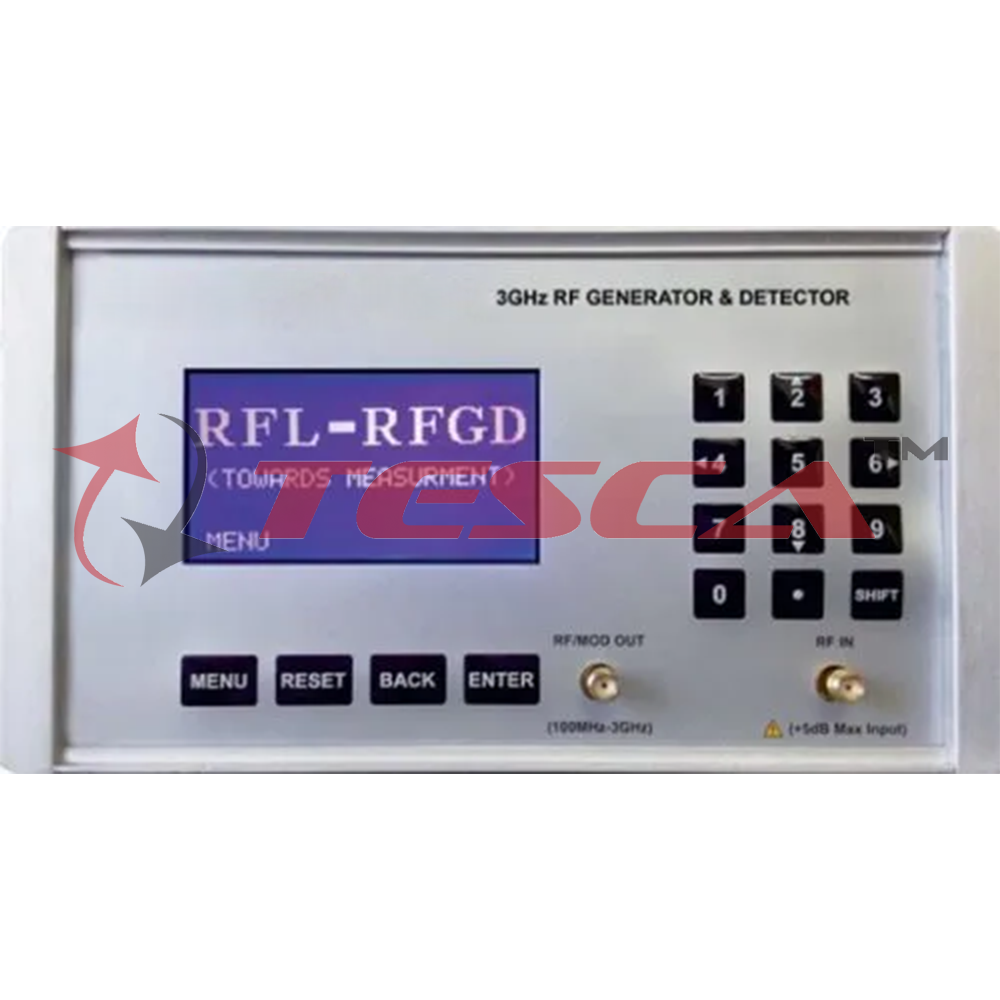
Order Code: 10209I
Category: Antenna, Satellite, GPS, Radar, RF Trainers
10209I is specialized RF signal generator and detector covering frequency range from35MHz to 4GHz with reliable performance and multiple built like modulation capabilities (AM, FM, PSK).The architecture use highly accurate and stable Phase locked loo...
SPECIFICATION
10209I is specialized RF signal generator and detector covering frequency range from35MHz to 4GHz with reliable performance and multiple built like modulation capabilities (AM, FM, PSK).The architecture use highly accurate and stable Phase locked loop (PLL) synthesizer based frequency generator with double harmonics capability having with excellent phase noise. The RFGD system employs in built high dynamic log detector arrangement for forward and reflected power arrangement. A SMA connecter provide output for full span with adjustable output power form -30dBm to OdBm into a 50 ohm load.A BNC type input available for modulating signal at the near end equipment. User friendly GUI supports monitoring, controlling and plotting the records.
FEATURES
- 3GHz Synthesised RF Generator and Detector
- Internal and External Frequency Modulation
- High Stability and Low Phase Noise
- Wide Power Range from -30dBm to OdBm
- Dynamic Range -5OdBm to 10dBm
- Frequency Stepping 1MHz
- S-Parameters Measurement
- Analysis of Filters Response
- Highly Reliable
- Both Standalone and PC interface
- 1dB Insertion Loss Directional Coupler
SPECIFICATIONS
- Frequency : 35MHz TO 3GHz
- Frequency Resolution : 1MHz
- Modes :Single tone,Freq sweep, Freq hopping, Power sweep
- Freq sweep for full span :5 3.8 sec
- Frequency Offset : ± 100 Hz
- Sub Harmonics : 50 dBc/Hz
- Phase Noise : 80 dBc/Hz @800MHz
- Power Max : OdBm @ upto 1.5GHz
- : -10dBm @ upto 3GHz
- Power Variation : ± 0.5dBm
- Power Resolution : 0.5dB
- Power sweep mode : 3 sec
- Detector dynamic range : -50dBm to 10dBm
- RF Detector Sensitivity : -60dB
- Modulation :AM,FM,PSK
- AM Modulation Range : 100MHz to 2.8GHz
- FM Modulation Range : 300MHz to 1 Ghz
- PSK Modulation Range : 100MHzto 1GHz
- LCD display :128x64 graphics display
- Interface
- Impedance : USB-B type : 50 0
- User interface : Standalone and PC based control mode available
- Size : 170mmx292mmx100m
- Software : User friendly GUI having inbuilt cable calibration facility and compatible environment Win XP Win 7,Win Vista
External Directional Coupler
- Frequency Range : Wide Band 20MHz to 3GHz
- Directivity :20dB
- Insertion Loss :1dB
- Measurement :Return Loss, VSWR & Impedance
RF GENERATOR
Synthesized radio frequency signal generators
Virtually all radio frequency signal generators used today employ frequency synthesizer technology.
- Using this technique enables frequencies to be entered directly from a keypad, or via remote control and it also enables the output signal to be determined very accurately.
- The accuracy being dependent upon either an internal reference oscillator that can have a very high degree of accuracy, or the signal can be locked to an external frequency reference which can be exceedingly accurate .
- Synthesized signal generators are available in many forms.
- High end RF signal generators can be contained in traditional bench cases as well as in modular forms like PXI. In addition to this, a number of much lower cost USB RF signal generators are coming onto the market. Using the power of a PC, these signal generators can be made much more cheaply that those in specialised cases with front panels, power supplies and the like.
Phase locked loop synthesizer:
Phase locked loop synthesizers are used within most RF signal generators as they enable signals to be generated over a wide range of frequencies with a relatively low level of spurious signals. Phase locked loop synthesizer technology is well developed and enables high performance RF signal generators to be produced using them.
RF Detector
Phase locked loop synthesizer:
RF power detectors pick up radio frequency signals and generate an output corresponding to the strength of the signal. Subsequently, a processor correlates this output to real signal power. In applications requiring greater dynamic range, a new generation of instruments, such as logarithmic and RMS instruments, are replacing the traditional diode detection method. All classes of detection systems possess unique characteristics that make them suitable for particular uses.
Real signal power provides RF engineers with information essential to selecting the component size and establishing controls for optimal signal and data accuracy. The power is monitored closely over increasing distance to analyze circuit performance and reliability in communications application
Recently directional coupler and log detector used to measure the forward and reflected power in a RF system. The block diagram is shown as above
INSERTION LOSS MEASUREMENT
Insertion loss is the loss of signal when traveling in and out of a given circuit or traveling into a component and out of the component. If your signal is at 100% going into a component, and coming out there is a loss, its described as insertion loss and is measured in decibels (dB). 3dB is described as the end point for any component and is equivalent to the signal strength being reduced by 50%
KEY MEASUREMENT PARAMETERS
1. Insertion Loss (S12)
Graph shows insertion loss of passive Microstrip BPF filter. It shows 3dB bandwidth of Microstrip BPF is 260MHz
2. Isolation (S41)
isolation at 2470MHz.Directional coupler is 4 ports device. For S41 measurement remaining two ports will be terminated by 50 Ohm load.
3. Transmission and Reflection coefficient (S41)
Graphs show transmission and reflection coefficient of filter. It can conclude that the transmitted power (S12) is -3dB and reflected power (Sii) of filter is very less around -39.8dB.
4.Single tone frequency generation.
Graphs show this operating mode is to generate the single tone frequency at the selected power
5.Frequency Sweep
Graphs shows RF Generater Frequency Sweep from 500MHz to 1300 MHz It. also shows power generating -4dBm at 600 MHZ
ACCESSORIES
- 10209I—Control Unit :01nos
- SMA(M) to SMA(M) 50 ohm Rg316 cable 50cm : 02nos
- BNC to BNC Cable : 01nos
- 9VAdapter : 01nos
- USB cable (Male Ato Male B) : 01nos
- Power Cord : 01nos
- Software on CD : 01nos
- Manual : 01nos
- Wide Band Directional Coupler : 01nos
Experiments list
- Determination of insertion loss (S21) of Microstrip Ring Resonator
- Measurement of Isolation Characteristics of Circulator
- Measurement of Attenuation Power for Pi Attenuator
- Gain Measurement of MMIC Amplifier
- PIN Diode Modulator Investigations
- Characterization of Circulator
- Characterization VCO
- Characterization RF Mixer
- Characterization of Schottky Diode Detector
- Determination of Power Division Characteristics (S21 ,S31)
- Measurement of Isolation of Directional Coupler (S41)
- Determination of 3dB Bandwidth of BPF Filter
- Determination of 3dB cut off Frequency of LPF Filter
- Characterization of PIN Diode as RF Switch


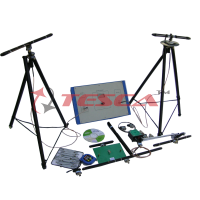
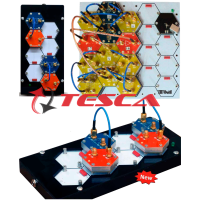
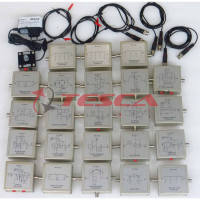

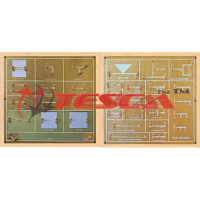
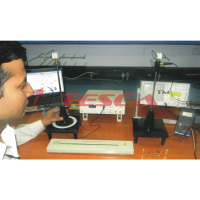
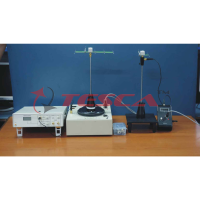
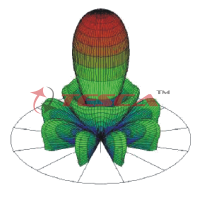

 91-9829132777
91-9829132777